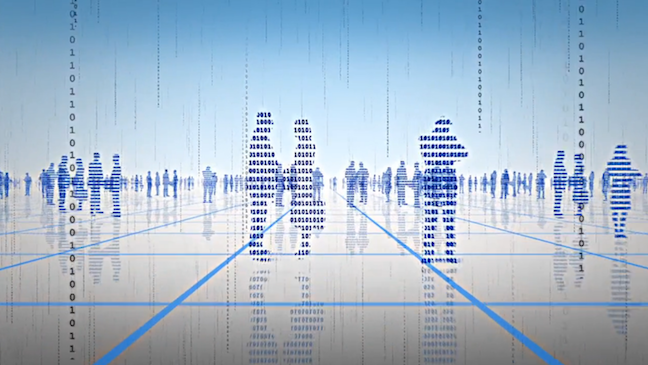In the past, social scientists seeking to measure attitudes or behaviors were largely limited to collecting data through surveys or experiments conducted in artificial laboratory settings. But thanks to the rise of mobile devices and other data-driven sensors, today’s researchers have the ability to measure human behavior “in the wild” on an unprecedented scale.
Add in the capabilities of today’s mobile devices to send out triggered messages based on an array of inputs, and social scientists can not just measure, but experimentally motivate change in people’s behavior. The potential is boundless: for example, imagine a location-based, mobile software application that sends a coupon for a healthy, low-sugar snack any time a diabetic person walks into a grocery store. Or a smartwatch app that tracks the pulse of a patient with a heart condition and vibrates to remind him to take his medicine.
To explore these emerging opportunities—and their far-reaching implications—UC Berkeley’s Social Science Matrix sponsored a seminar on “Behavior Measurement and Change.” Led by Raja Sengupta, Professor of Civil and Environmental Engineering, and Shachar Kariv, Professor and Chair of the Department of Economics, the seminar brought together researchers from diverse fields such as psychology, sociology, economics, public health, and engineering to explore how modern digital tools and methodologies can be harnessed to measure—and change—human behavior.
“There has been a quantum jump in the comprehensiveness of the measurement that is possible,” says Sengupta. “That we are now able to gather data of longitudinal depth on individuals, that will beg a new series of questions.”
Kariv and Sengupta have a direct stake in this question, as they helped establish Berkeley’s Experimental Social Science Laboratory (XLab, http://xlab.berkeley.edu), which helps researchers conduct social-science experiments using in-lab and mobile technologies. As a result of the proliferation of data-gathering devices, any environment has the potential to become an observation ground for human behavior.
One initiative that is taking advantage of this new opportunity is the San Francisco Travel Quality project, led by Andre Carrel, a Ph.D. candidate in UC Berkeley’s Department of Civil and Environmental Engineering, who works in conjunction with Joan Walker, Professor of Engineering at UC Berkeley. This research project aims to understand how improving the quality and reliability of buses and other transit can lead people to use public transportation systems more frequently.
“Historically we’ve assumed that everyone considers all modes for all trips, that you look at how long and how much it will cost and make a rational decision,” explains Walker. “In reality, most people make a lifestyle decision. We are trying to understand this modality, to get people out of driving-oriented modality into a multi-modal class.”
Working with XMobile Lab, a specialized center spun off from XLab that focuses on mobile tools, Carell developed an app that enabled him to transform crowded urban buses in San Francisco into de facto social-science laboratories. In exchange for a free monthly bus pass (provided by the San Francisco Municipal Transportation Agency), roughly 800 participants agreed to download this app, which automatically transmitted their location data over a six-week basis. Carell and his team have been able to use these logs to create detailed travel diaries for participants. They are then able to cross-reference this information with location data for the buses, which are tracked through automatic vehicle location (AVL) software.
Meanwhile, the researchers sent out quick periodic surveys to participants to gather insights about their experiences and emotions related to bus-riding and other transportation. By comparing the attitudinal data with the objective data—for example, whether a person missed the bus, or their bus was late—the researchers have been able to analyze how people’s experience on a bus one day affects their willingness to take public transit on subsequent days.
“The nice thing about tracking [participants] is that we get a detailed picture of what their travel was like before an after, without having to rely on self-reports,” says Walker. “You can understand at a personal level whether someone missed a bus or had a really bad experience that pushed them away from using transit.”
The purpose of this research is not just to understand the reasons that people do or do not choose to use public transportation, but to gain insights into how to best improve public transportation—and increase ridership—in San Francisco and other major U.S. cities. In other words, it is about both measuring and changing behavior. “Cities are investing billions of dollars into decisions that will influence generations of people,” Walker says. “You need a behavioral model that will predict how people will travel in the future. In order to make these models work better, they need to be more reflective of real behavior. Mobile technology provides a way to lower the cost and response burdens.”
The Matrix-sponsored Behavior Measurement and Change seminar aimed to help researchers from across disciplines come together to explore how they can take advantage of these emerging opportunities to advance new frontiers in their respective domains. The seminar focused in part on how new technologies, such as skin sensors and wearable devices, are contributing to the so-called “quantified self movement,” by which people can track various dimensions of their lives, from their income flows to their dietary intake, thereby seeding new troves of information that social scientists can use.
The interdisciplinary nature of the Matrix seminar was vital for promoting the sharing of ideas, says Walker. “When you go out and talk to people in related fields, you realize that they are using different methodologies and language than you tend to use,” she says. “The seminar helps us push us out of our set ways and think about things more creatively. It’s a lot of work, but it makes you question where your methods come from and makes you understand what assumptions you’re making.”
The diverse participants in the seminar had different intended outcomes. One member was Dan Ackland, an adjunct professor in the School of Public Policy, who sought new approaches for promoting treatment of HIV patients and was considering how a smartphone app might be used to motivate people to, for example, make more regular visits to the doctor. The seminar was also instructive for co-founder Kariv, who co-authored a paper in Science that demonstrated how data from online financial software can be used to gain real-time insights into consumer spending in relation to income; his research relied upon 10 months worth of transactions of about 75,000 users of Check, a financial software brand.
“Part of it is about trying to use measurements other than asking people,” says Sengupta. “Historically you had to ask people to get their states of mind. Now we can get information from financial software, or from measuring the activity in their brains. We can measure sweat on the palm, and changes in the pulse rate, but all in a natural setting.”



